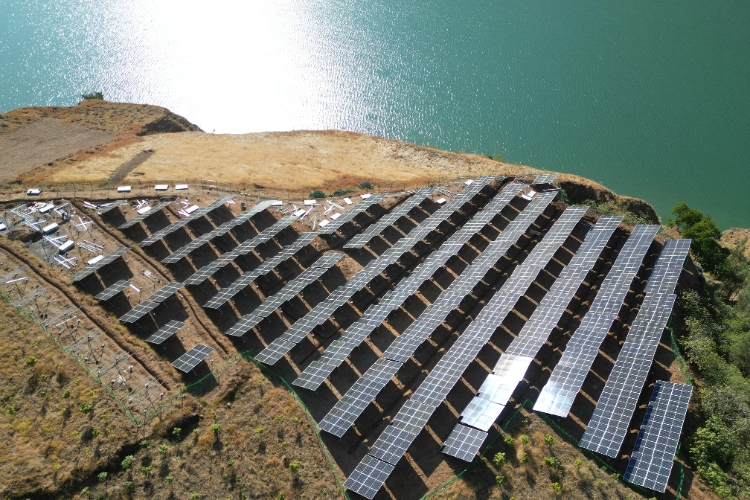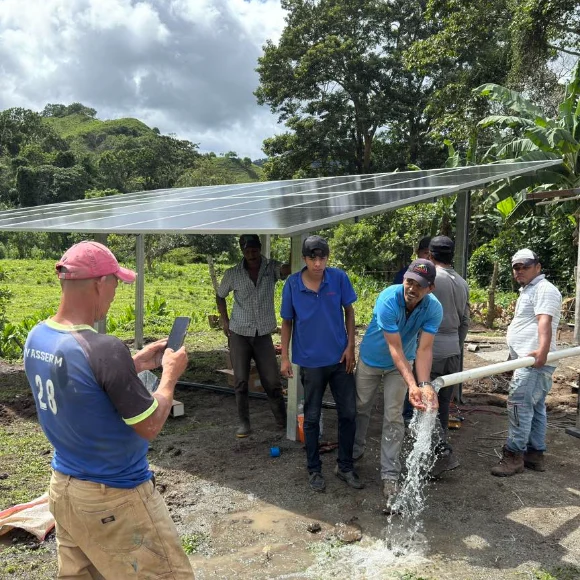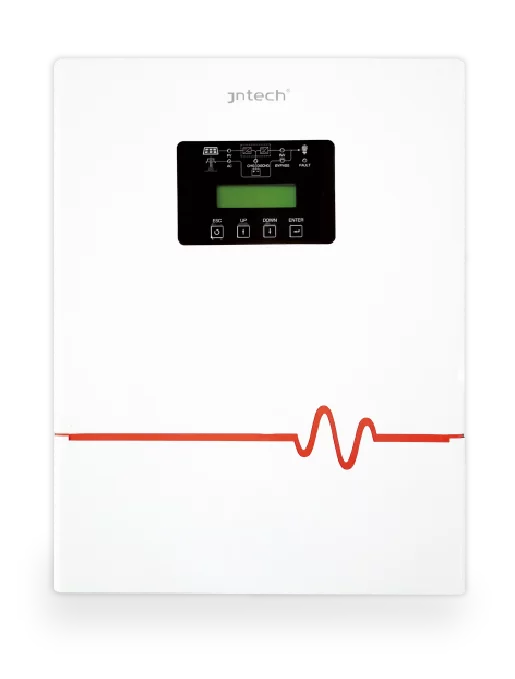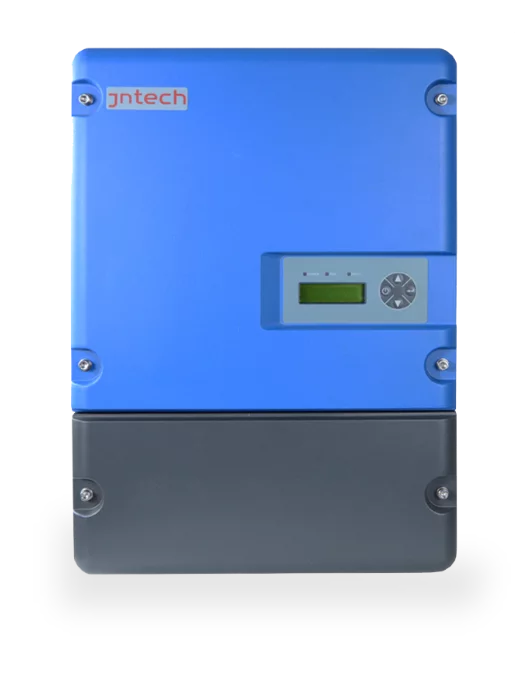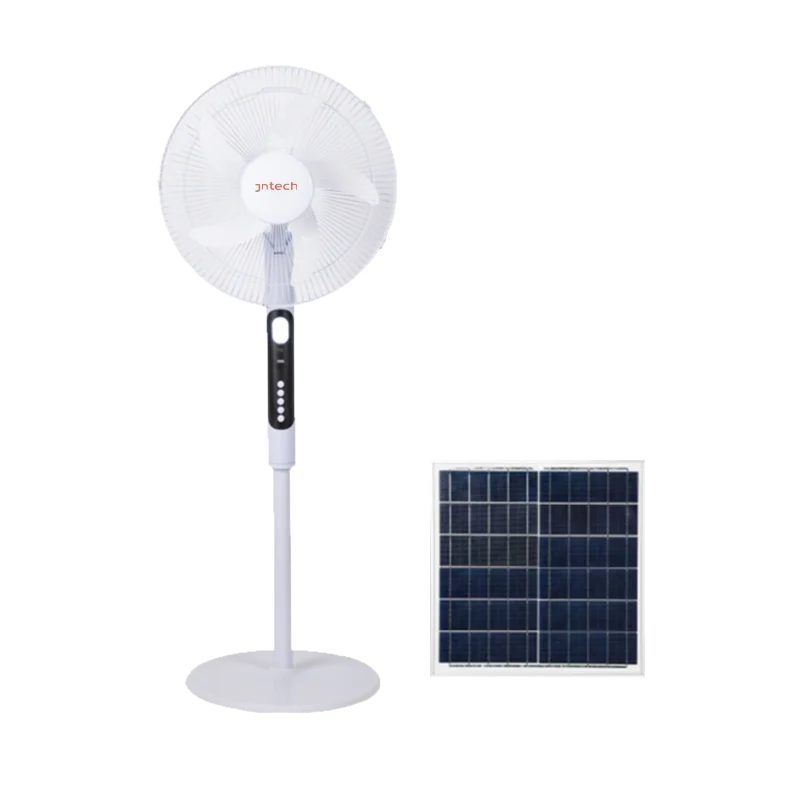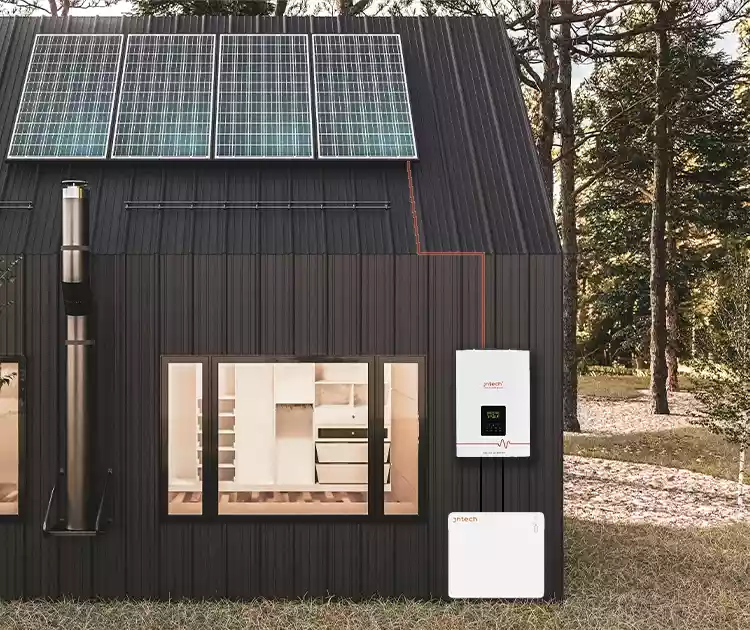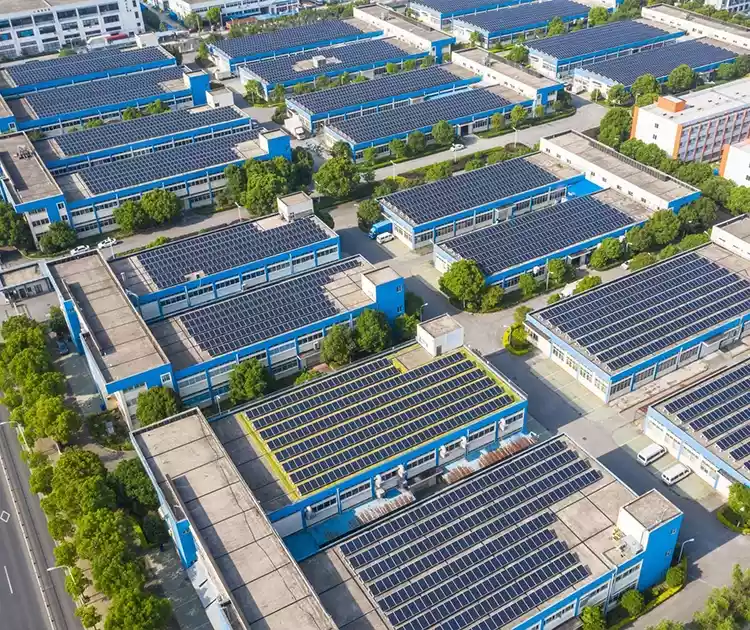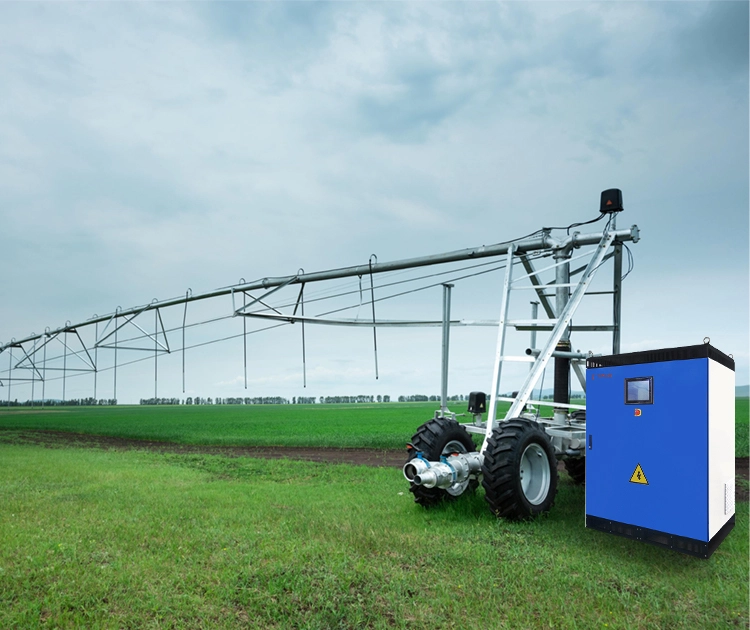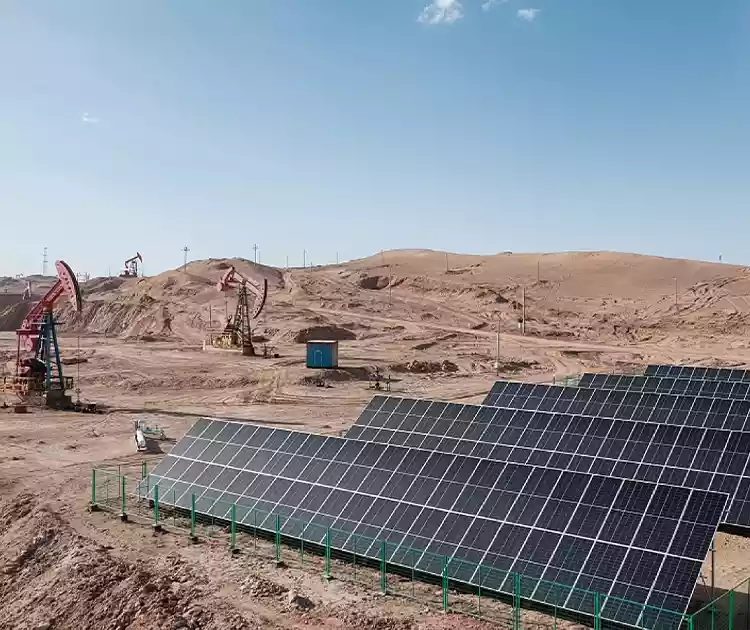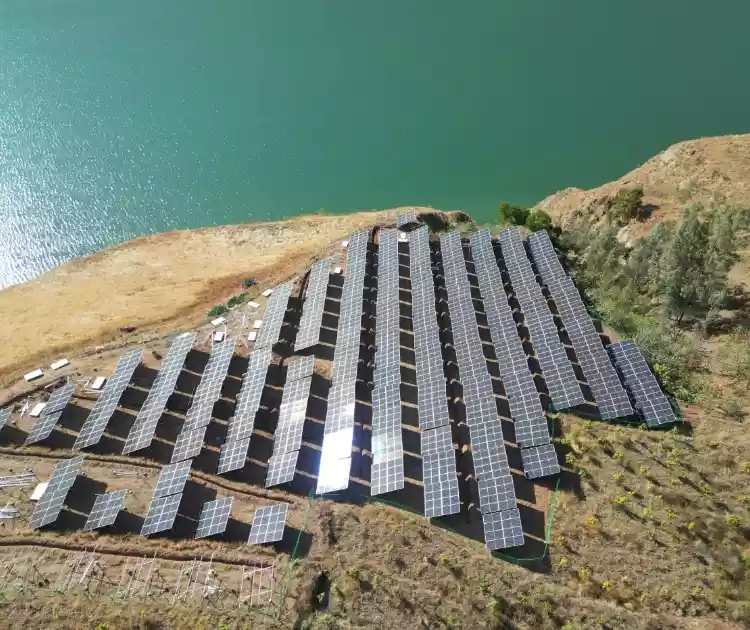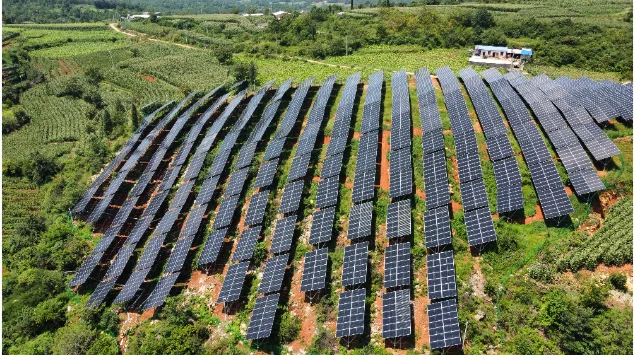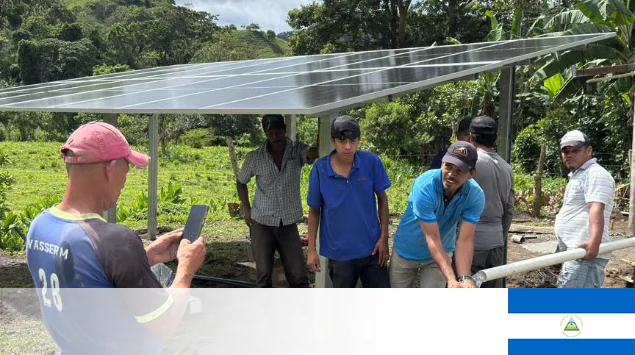What Is a Solar Pump System?
Release time: 2025-09-30
JNTech boasts a professional R&D team dedicated to photovoltaic applications. They have overseen the drafting of national industry standards for photovoltaic water pump inverters, photovoltaic water pump systems, photovoltaic sprinkler systems, and photovoltaic drip irrigation systems, as well as industry standards for household photovoltaic systems.
A solar water pump system primarily consists of four components: a photovoltaic array, a solar water pump inverter, a three-phase AC water pump, and a water storage device. The photovoltaic array absorbs solar radiation and converts it into electrical energy, powering the entire system. The photovoltaic water pump inverter converts the DC power output from the photovoltaic array into AC power to drive the water pump, adjusting the output voltage and frequency in real time based on changes in solar radiation intensity to achieve maximum power point tracking (MPPT). When solar radiation weakens, the photovoltaic water pump system can switch to mains power, which serves as a supplemental energy source.
Solar water pump systems are primarily used for domestic water use, agricultural and forestry irrigation, desertification control, livestock water supply, village and urban water supply, sewage treatment projects, and fountain landscapes. Photovoltaic water pump systems are low-carbon, energy-efficient, and environmentally friendly. They can also significantly improve the living standards of people in areas with water and electricity shortages. Therefore, they have broad market prospects and enormous social value.
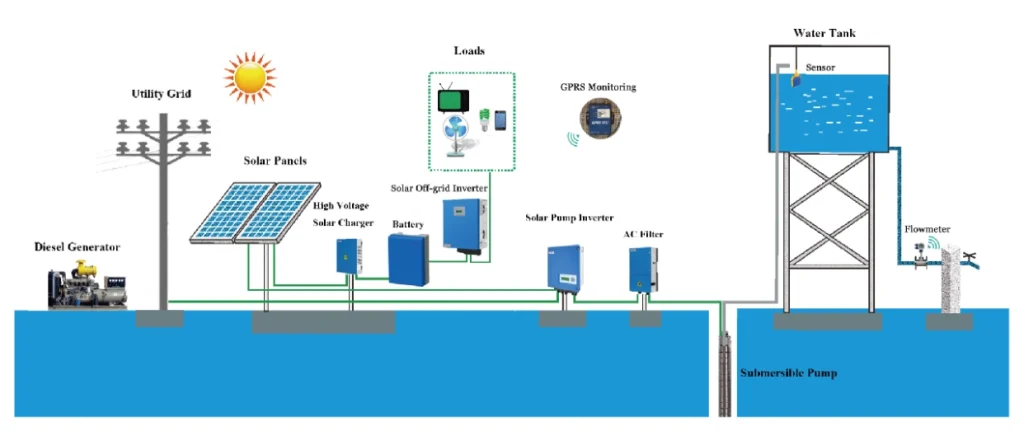
System Features:
1. Compatible with various three-phase AC water pumps, suitable for a wide range of applications.
2. Low maintenance costs compared to traditional AC water pump systems.
3. 24/7 unmanned operation with configurable automatic/manual operation modes.
4. Built-in data logging module allows for querying system fault information and historical operating information.
5. Various remote communication functions allow for remote monitoring and control of the system’s operating status and mode.
6. IP65-rated outdoor system adaptable to various application environments, with low installation costs.
7. Wide operating temperature range, up to 60°C.
8. Comprehensive system protection mechanisms extend system life.
9. Compatible with various solar cells, providing high system redundancy.
10. Various solutions are available to meet customer needs, including anti-theft, GPS remote communication, compatibility with mains input, and remote start/stop control.
Visit our website: www.jntechenergy.com
Email us at: info@jnnewenergy.com
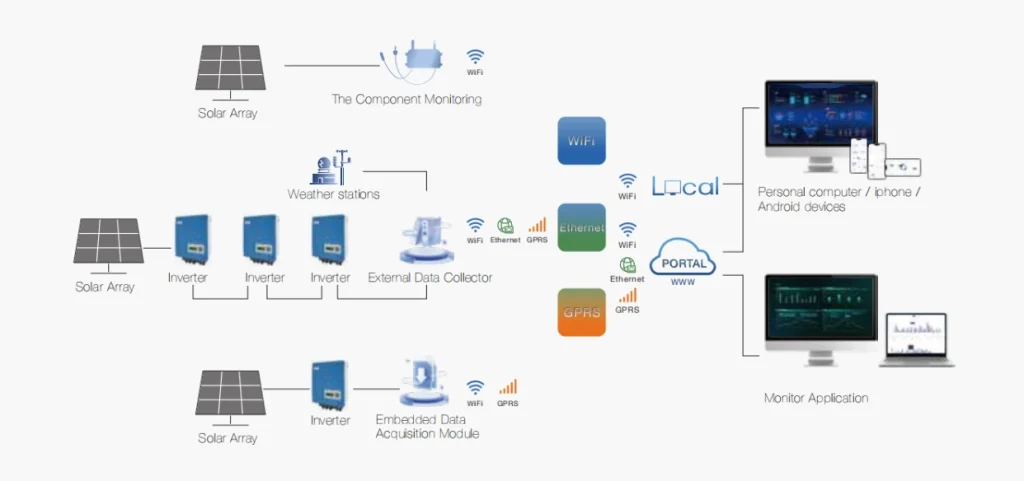
Monitoring System
Features:
Control the solar pump inverter remotely
Manage all solar pump inverters and systems
Check system operating status at any time
Read all system information on laptop, iPhone or other electronic devices
View alarm records and diagnose error codes
Analyse data to ensure system is in good working condition
